 |
Home | Charity | Feedback |
Oman:
Bahla,
Jabal Akhdar,
Jabrin,
Muscat,
Nizwa,
Sur,
Wadi Bani Khalid,
Wadi Shab,
Wadi Tiwi,
Wahiba Sands
Muscat, Oman: Dazzling souks and warm people by Prakash Bang, Editor in Chief 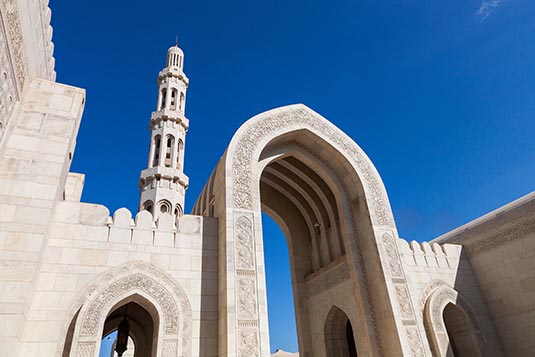 Today, the Capital City of Oman, but for centuries, Muscat was barely noticed by the outside world. The first mention came in writings dating from 2 BC. However, the city slipped back into obscurity, with no further mentions until the 13th century. 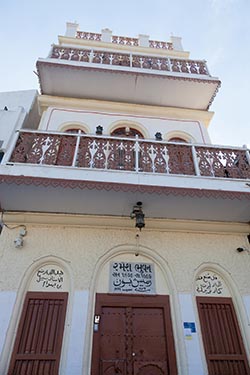 As a result, little is known about Muscat's formative years, but by the dawn of the 14th century, it was a trading port of some significance. Its success, however, also made it a target and the Portuguese seized control of the city in the 1580s. They constructed the city walls along with Fort al-Jalali to protect themselves from the Ottoman Turks.
As a result, little is known about Muscat's formative years, but by the dawn of the 14th century, it was a trading port of some significance. Its success, however, also made it a target and the Portuguese seized control of the city in the 1580s. They constructed the city walls along with Fort al-Jalali to protect themselves from the Ottoman Turks.
Although the Ottomans were unsuccessful, the local Yaruba dynasty was not and in 1649, they drove out the Portuguese. In the years that followed Muscat became one of the foremost ports in the Indian Ocean but it was twice convulsed by civil war before falling to the Persians in 1743. Free once more, Muscat became Oman's capital city in 1793 and it soon grew in influence and prosperity, with its rulers racking up an empire that extended as far as Africa. But Africa was also to prove the city's undoing and when Said bin Sultan took control of Zanzibar and moved his capital to Stone Town, thus affecting Muscat's fortunes. In the 19th century, the British arrived, using Muscat as a major staging point between their interests in India, Africa and the Middle East. These interests included the formerly Omani island of Zanzibar and as a result, the city suffered an economic slump. As the city grew poorer, tribal attacks increased and the Sultan was twice forced to get help from the British in 1915 and 1963. The rise of Sultan Qaboos, however, brought prosperity, peace and an extensive building programme which reshaped the city into the modern metropolis it is today. 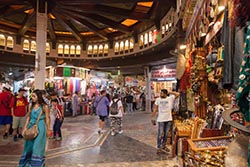 When in Oman there is one attraction that stands out from the rest, which is known for its grand stature and mystified history- the Grand Mosque. And sure enough, that would be our first stop for the day. Our driver cum guide was waiting for us in the hotel lobby. A 20-minute drive brought us to the gates of this magnificent structure - the Sultan Qaboos Grand Mosque.
When in Oman there is one attraction that stands out from the rest, which is known for its grand stature and mystified history- the Grand Mosque. And sure enough, that would be our first stop for the day. Our driver cum guide was waiting for us in the hotel lobby. A 20-minute drive brought us to the gates of this magnificent structure - the Sultan Qaboos Grand Mosque.
The mosque used to have the world’s largest carpet and chandelier, but the title was short-lived. Bigger versions were made in mosques in Qatar and Abu Dhabi. Regardless of titles and records, the mosque is still pretty impressive. The chandelier is located in the centre of the men’s prayer hall and measures a staggering 14 meters and weighs 8.5 tons. It holds 600,000 shining bright Swarovski crystals, 24 carat gold plating and took more than four years to complete. 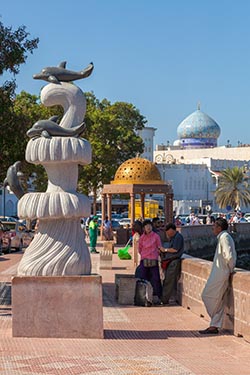 Thankfully, even non-Muslims are allowed to enter the mosque from 8 AM to 11 AM every day, except Fridays. Children under 10 are not allowed in the prayer halls and females must be fully covered. The guards are quite strict about the rules. If required, female visitors can buy a cloth to cover their knees and head.
Thankfully, even non-Muslims are allowed to enter the mosque from 8 AM to 11 AM every day, except Fridays. Children under 10 are not allowed in the prayer halls and females must be fully covered. The guards are quite strict about the rules. If required, female visitors can buy a cloth to cover their knees and head.
The mosque was completed in 2001 and took six years to build. It covers a massive area of 416,000 square meters, and can hold up to 20,000 worshipers. The building itself is made up of 300,000 tons of sandstone. There's a special hall for women worshippers that can hold up to 750. The Mosque is embellished in beautiful, colourful mosaic patterns. There is no official number stating how many stones have been used, but it is sure an astounding sight. Take your time to walk the halls and study the handcrafted details of the mosque. It is truly a one-of-a-kind piece of art. Thereafter, head over to the huge mosque library. Although you may not be able to read any of the books, the library holds more than 20,000 books and is an impressive sight. 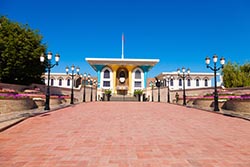 Special enclosures have been created with a fountain-looking construction in the centre which is the ablution room. This is where worshipers come to perform the cleansing or purification ritual before prayer. There are two forms of cleansing, the lesser form (wudu) and the greater form (ghusl). Different circumstances will determine which of the two is needed.
Special enclosures have been created with a fountain-looking construction in the centre which is the ablution room. This is where worshipers come to perform the cleansing or purification ritual before prayer. There are two forms of cleansing, the lesser form (wudu) and the greater form (ghusl). Different circumstances will determine which of the two is needed.
It's quite easy to spend a few hours in the mosque and the gardens that surrounds. It was now time for us to drive towards Mutrah - the old-world charm of Muscat. Before the discovery of oil, Mutrah was the centre of commerce in Oman. It is still a center of commerce as one of the largest sea ports of the region is located there. Other landmarks include Souq Mutrah, a traditional bazaar and Sour Al-Lawatiah, a small community of houses surrounded by an old wall. 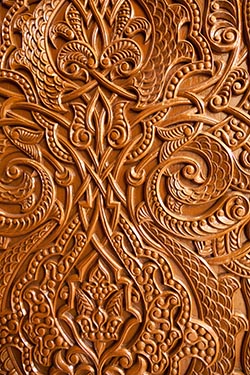 Al Dhalam (Darkness in Arabic) Souq is the local name for the Mutrah Souq. The Mutrah Souq is perhaps one of the oldest marketplaces in the Arab world. It is located adjacent to the harbour of Muscat and has seen immense trade in the age of sail, being strategically located on the way to India and China. It has been named after darkness because of the crowded stalls and lanes where the sunrays do not infiltrate during the day and the shoppers need lamps to move around. The market was a source of supply for Omanis where they could buy their needs in the 1960s. Most of the goods were imported, in addition to local products like textiles, fruit, vegetables and dates.
Al Dhalam (Darkness in Arabic) Souq is the local name for the Mutrah Souq. The Mutrah Souq is perhaps one of the oldest marketplaces in the Arab world. It is located adjacent to the harbour of Muscat and has seen immense trade in the age of sail, being strategically located on the way to India and China. It has been named after darkness because of the crowded stalls and lanes where the sunrays do not infiltrate during the day and the shoppers need lamps to move around. The market was a source of supply for Omanis where they could buy their needs in the 1960s. Most of the goods were imported, in addition to local products like textiles, fruit, vegetables and dates.
In the past, the market was built from mud and palm leaves, which well-suited the high temperatures and the hard climate conditions. Thankfully, today, the souq stands renovated to make shopping a pleasurable experience. The main thoroughfare of the souq carries mainly household goods, shoes and ready-made garments. Further inside, there are mixed smells of frankincense, perfume oils, fresh jasmine, and spices. There are also tiny shops that sell Omani silver and shops that white dishdashas and embroidered kumahs. 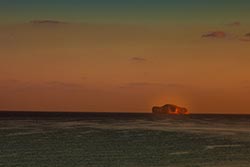 Since we were not shoppers, but visitors, we quickly wrapped up our tour and headed for our next destination but not before quenching our thirst with fresh glass of pomegranate juice at one of the many juice vendors lined along the corniche.
Since we were not shoppers, but visitors, we quickly wrapped up our tour and headed for our next destination but not before quenching our thirst with fresh glass of pomegranate juice at one of the many juice vendors lined along the corniche.
Short drive from Mutrah Souq is the Al Alam Palace, the ceremonial palace of His Majesty the Sultan. The palace is located in the heart of the Old Muscat, it is surrounded by the Al Jalali and Al Mirani forts. Former Sultans used to live in a house called Bait Al Alam which was demolished in the early 70s to build this new Palace in its place to be the official residence of the Sultan of Oman. 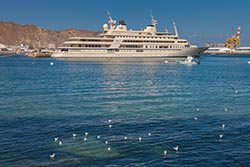 Sultan Qaboos rarely ever stays in Al Alam Palace as he seems to prefer his other residences in Al Seeb or Manah. However, this palace is the one used the most to receive high ranking official guests and has hosted in the past the likes of the Queen of England and the Queen of the Netherlands. The palace is not open to the public, but tourists can walk around the yard and gardens in front of the palace at any time. The Palace is neighboured by a number of other government buildings.
Sultan Qaboos rarely ever stays in Al Alam Palace as he seems to prefer his other residences in Al Seeb or Manah. However, this palace is the one used the most to receive high ranking official guests and has hosted in the past the likes of the Queen of England and the Queen of the Netherlands. The palace is not open to the public, but tourists can walk around the yard and gardens in front of the palace at any time. The Palace is neighboured by a number of other government buildings.
Al Alam Palace is surrounded by Al Jalali and Mirani forts, both of which are unfortunately not open to the public. Both forts were built in the 16th century around the time of the Portuguese invasion of Muscat. You can get a closer look of both forts and get a breath-taking view of the back of the palace by driving through the Al Alam road near the Omani French Museum where you can almost literally park your car behind the palace. 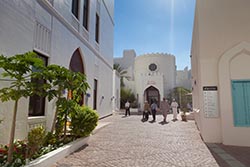 It was now time for lunch. And what better place to enjoy authentic Omani food other than Kargeen Restaurant? It was a buffet spread; a feast for meat lovers and vegetarians too.
It was now time for lunch. And what better place to enjoy authentic Omani food other than Kargeen Restaurant? It was a buffet spread; a feast for meat lovers and vegetarians too.
After lunch we requested our driver to drop us at one of Oman's large malls. We spent a few hours looking around and then took a cab back to our hotel. Dinner that night was at the hotel's Italian restaurant. The next mroning would move towards Nizwa, Jabrin, Bahla and Jabal Akhdar. Muscat Image Gallery  Photo viewer Photo viewer
|
|
|
Home |
Charity |
Feedback
Privacy Policy | Terms of Usage © YoGoYo.com. All rights reserved. |









































